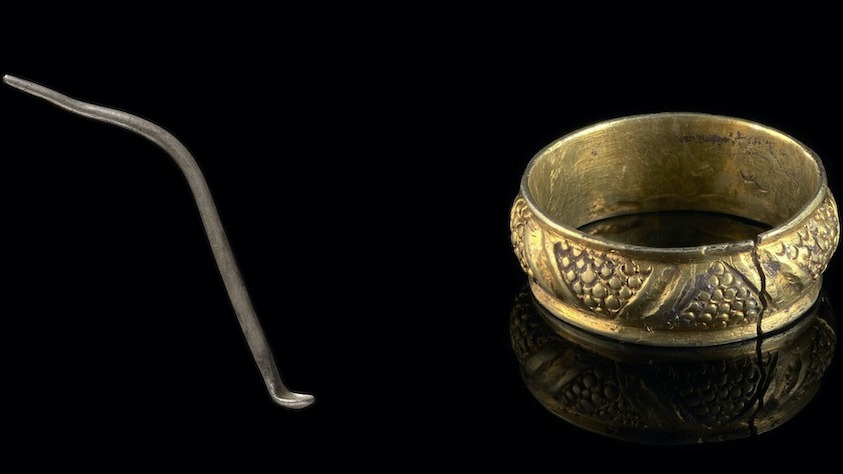
A Roman-era silver "toilet spoon" discovered by a metal detectorist in the U.K. has been declared a "treasure" by experts.
Valentinas Avdejevas made the peculiar finding in 2020 while exploring Vale of Glamorgan, a county in Wales. He surrendered the metal artifact to the Portable Antiquities Scheme for Wales, a local authority that works directly with metal detectorists who have unearthed artifacts. The utensil is currently in the possession of Amgueddfa Cymru – Museum Wales, according to a statement.
The narrow silver spoon (also known as a Roman ligula) contains a shallow, circular bowl attached to a thin, bent handle and would have been used to scoop out cosmetics and perfume from long-necked bottles.
Because the utensil was made of silver rather than of a less-expensive copper alloy, researchers think it was used to extract tinctures during medical procedures, since silver has antimicrobial properties. Similar toilet spoons have been found around the world, including an ivory one depicting a falcon from ancient Egypt, and offer insight into the day-to-day lives of people from ancient and Roman times.
Patricia Morgan, His Majesty's regional coroner for South Wales Central area, declared the medieval spoon a "treasure" along with several other finds from around the country, including a Bronze Age hoard of swords and axes and a post-medieval silver-gilt finger ring.
"This hoard is unusual as it contains fragments from two swords, one of which is a blade tip fragment with decorative grooves, which was made in northwestern France," Adam Gwilt, principal curator of prehistory at Museum Wales, said in the statement. "This small sword fragment therefore forms a key part of a much wider story, connecting those people who lived in Pendoylan Community with those who lived in north-western France, around 3,000 years ago."
Because all of the artifacts were made more than 300 years ago and contain more than 10% precious metal, they meet the criteria for being deemed treasure under the U.K.'s Treasure Act 1996.
Several museums around Wales have shown interest in acquiring the collection of artifacts.







